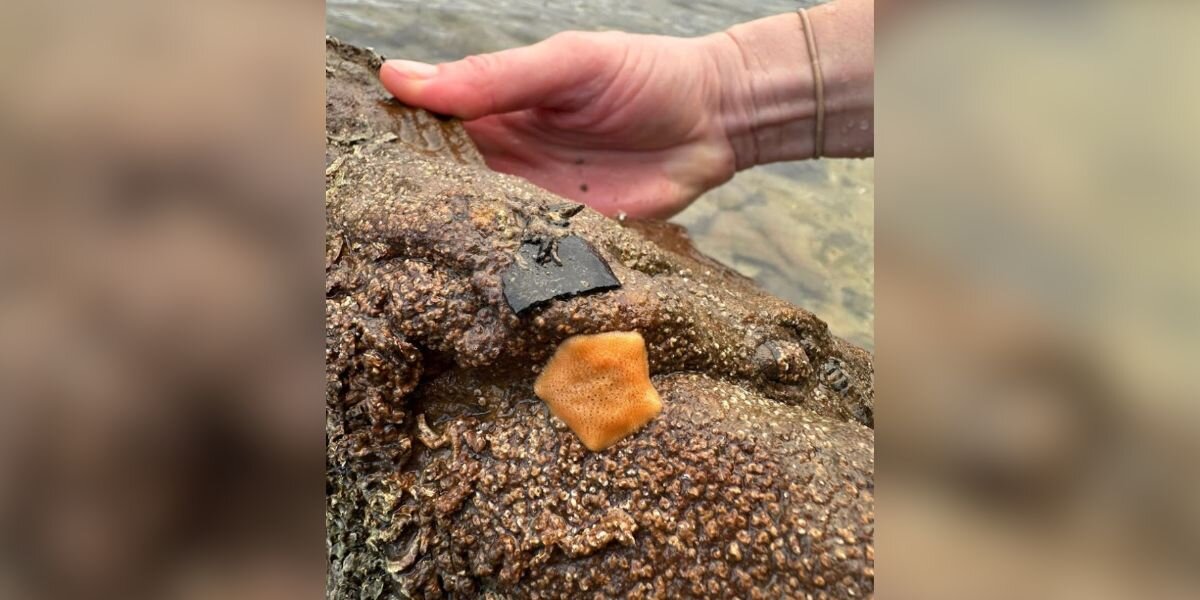Late last month, Dr. Fiona Fraser set out for a seaside habitat near Hobart, Australia, in search of a tiny endangered animal. Dr. Fraser, who’s the threatened species commissioner for Australia, knows how important it is to protect vulnerable wildlife. When she finally spotted the teensy blob she’d come to see, the animal lover couldn’t help but smile.
“It was pretty amazing,” Dr. Fraser told The Dodo.
 Dr. Kerry Cameron
Dr. Kerry Cameron
The orange ocean dweller was a Tasmanian live-bearing sea star, a critically endangered marine species only found in the South East region of Tasmania. According to Dr. Fraser, these animals are one of just six sea stars in the world who give birth to live young, as opposed to releasing eggs. The diminutive animals, who are no bigger than a finger nail, play a key role in their environment by feeding on micro-algal films that coat the surface of rocks.
“They’re a very charismatic and extremely rare little creature,” Dr. Fraser said.
 Dr. Kerry Cameron
Dr. Kerry Cameron
Animal researchers like Dr. Fraser are hard at work trying to save these beloved animals from extinction. The area the commissioner visited is currently being overseen by scientists with the Institute for Marine and Antarctic Studies at the University of Tasmania (IMAS), whose work is funded by the Australian government under the Saving Native Species program.
Together with local community groups, the scientists are removing porcelain crabs and Pacific oysters from the area, as these invasive species threaten the sea star. They’re also monitoring sea star populations and helping to raise awareness for the endangered animals.
The scientists know that species recovery takes a long time, and it will be a while before they see significant improvement. They’re hopeful that the animals will make a comeback, and they’re grateful for all the people, near and far, advocating for these special stars.
“It is great that people outside of the local community are starting to talk about the sea star and learn more about it,” Dr. Fraser said. “Hopefully it will encourage people to look further into how they can help native and threatened species that live in their own backyards and local areas.”
 Underwater Photographer In Awe When He Encounters Extremely Rare Baby”Seeing this in person is a once-in-a-lifetime opportunity.”
Underwater Photographer In Awe When He Encounters Extremely Rare Baby”Seeing this in person is a once-in-a-lifetime opportunity.”
